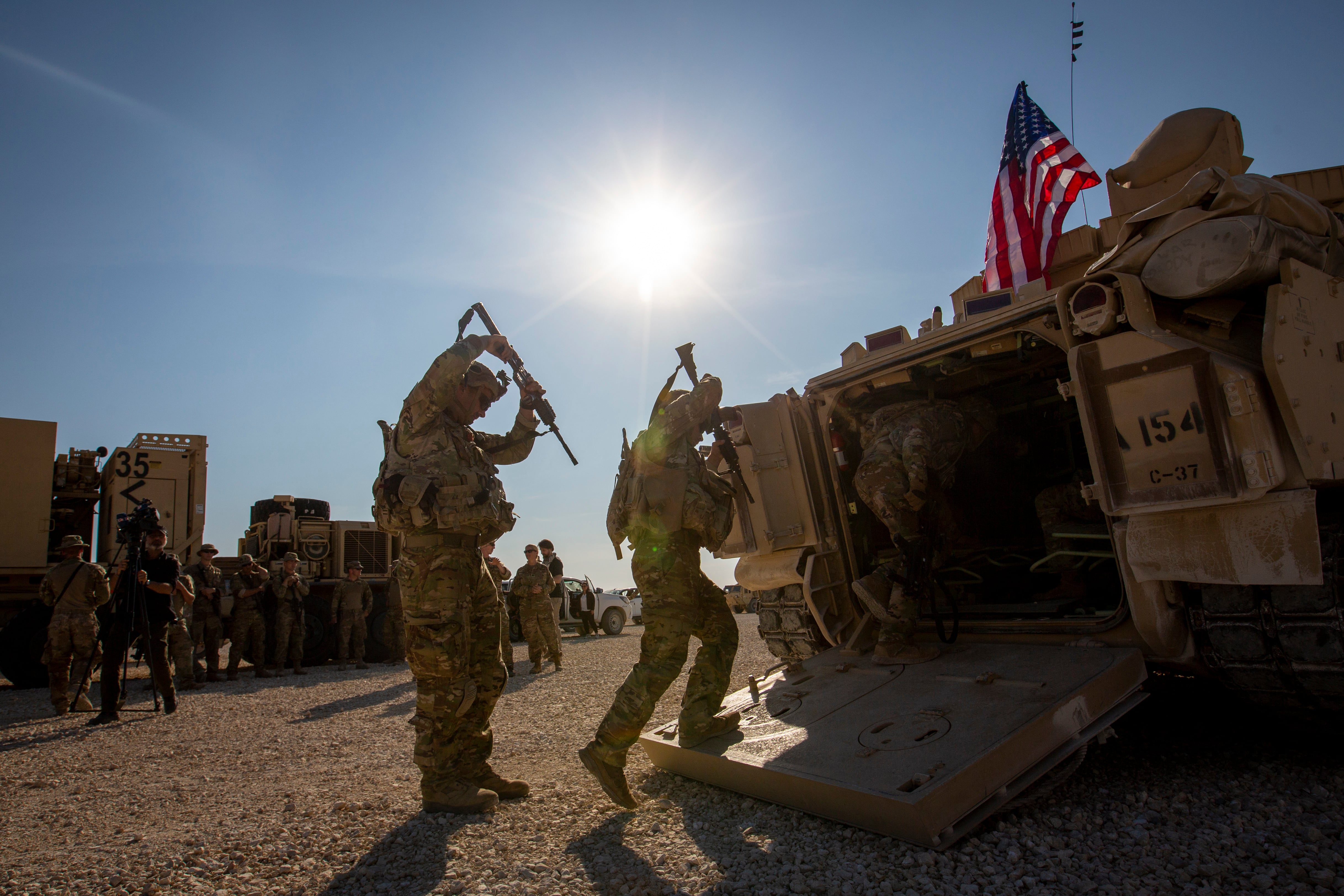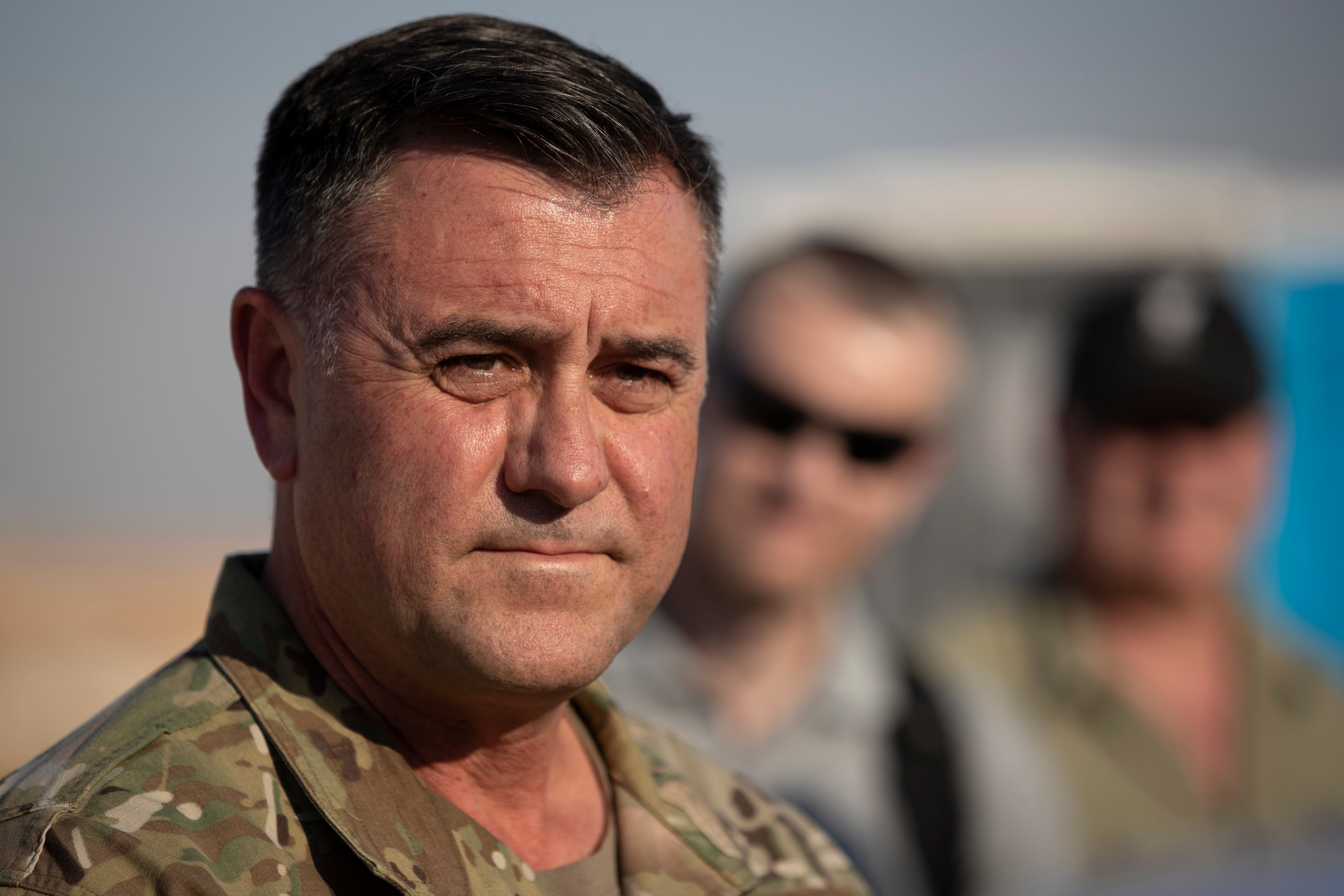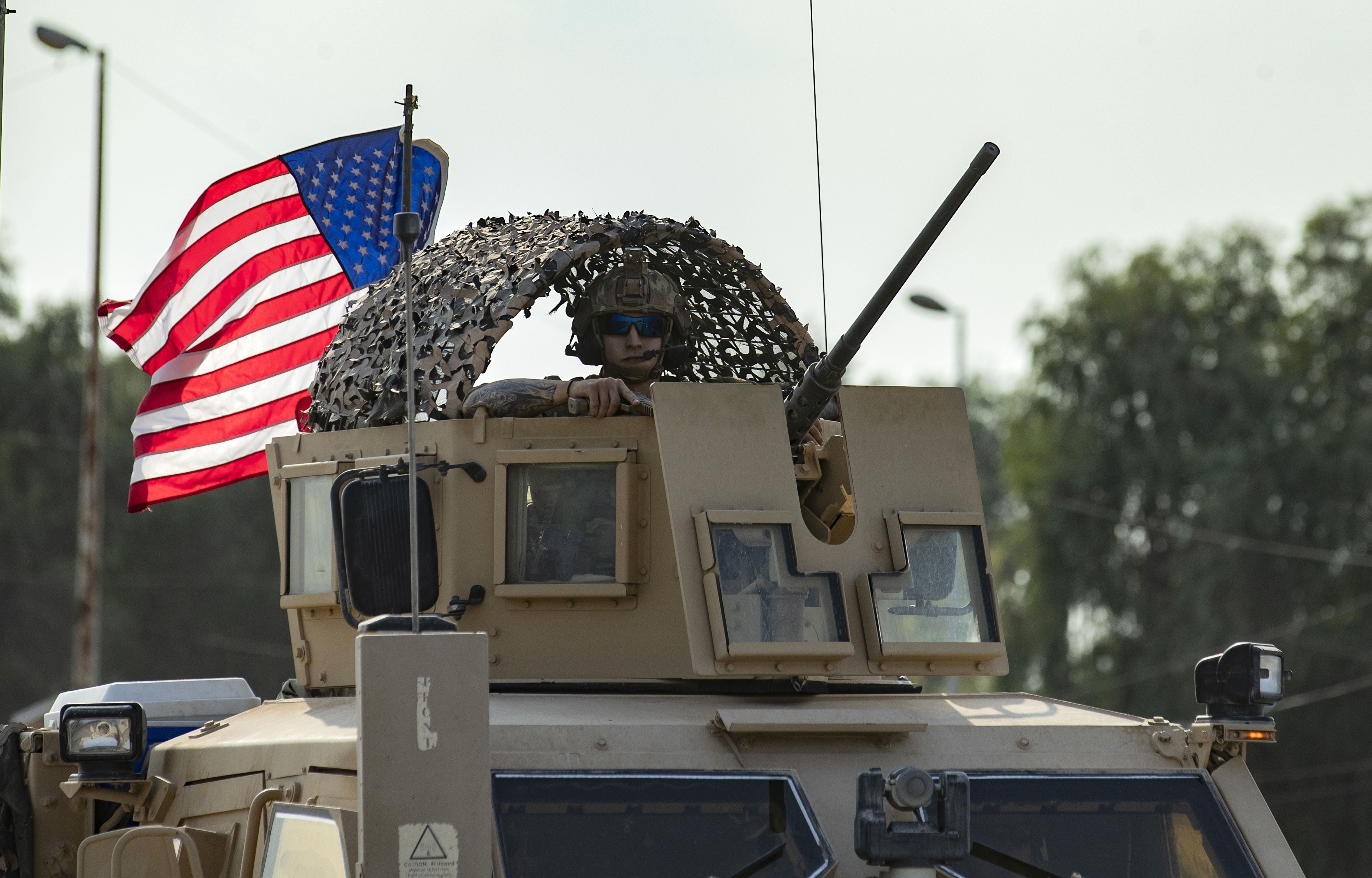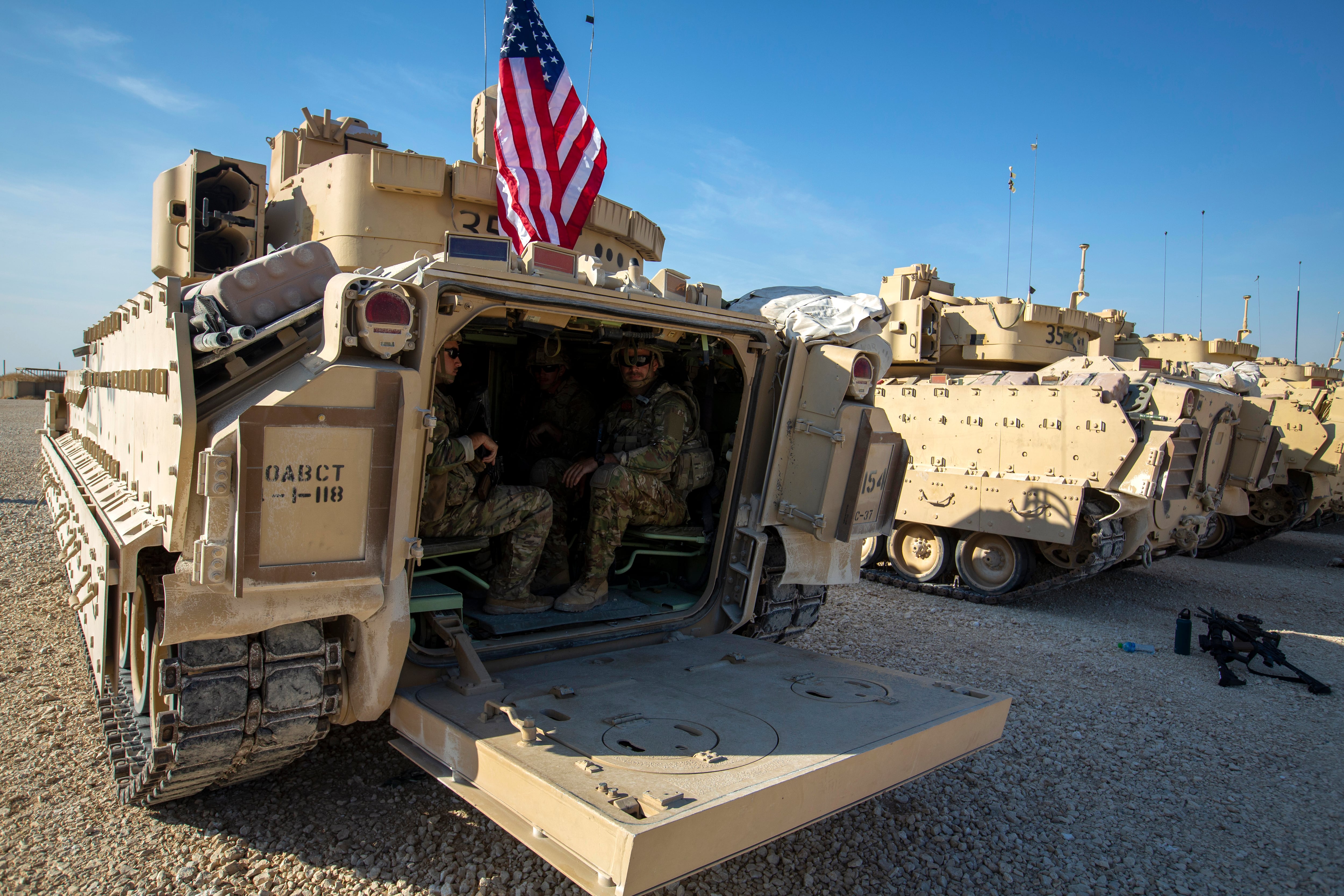ERBIL, Iraq — A senior U.S. coalition commander said Friday the partnership with Syrian Kurdish forces remains strong and focused on fighting the Islamic State group, despite an expanding Turkish incursion into areas under Kurdish control.
The U.S.-Syrian Kurdish relationship, which dates back to 2014, was strained after President Donald Trump last month ordered American troops out of northern Syria, making way for a Turkish invasion of Kurdish-held towns and villages along a stretch of the border.
On Friday, reports said U.S. forces completed their withdrawal from Kobani, a border region where the partnership against ISIS was cemented in 2014, and that Russians moved into to replace them.
The commander’s comments to The Associated Press reflect how troops on the ground are trying to stick to the original aims of the Syria mission despite a reduced and changed footprint. They say they are staying to fight alongside Kurdish forces against the Islamic State group, as well as deny ISIS the oil fields as a source of revenue while showing support for the Kurdish fighters who have lost a sizable part of the 30 percent of syria they once controlled. Their words however come as Trump says the mission now is focused on securing oil fields and infrastructure.
RELATED

Air Force Maj. Gen. Eric T. Hill told the AP on Friday that Islamic State militants remain “a global threat” and that the partnership with the Kurds and international action is still needed against it.
“So, I don't think the work is complete. We still have to pursue them and eliminate them everywhere we can find them,” he told the AP in a telephone interview from Baghdad.
Hill said ISIS militants are trying to regroup and find new financing, are still interacting with supporters on social media and continue to plot attacks through affiliates around the world. Syria and Iraq, he said, remain “the center point for all Daesh operations,” he added, using the Arabic acronym for ISIS. “This is where Daesh lives and where they coordinate their acts of terror."
Kurdish and American forces are now operating in a region that is more complicated and crowded with troops since the Turks began their attack on northeast Syria in early October, aimed at pushing the Kurdish fighters away from the border.
Turkish forces have consolidated control over a stretch of the border running 120 kilometers (70 miles) wide and 30 kilometers (20 miles) deep into Syria. They have also kept up pressure outside that area, fighting with Kurdish forces on the edges.
Syrian government forces and their Russian allies have moved into other parts of the border under a Russian-Turkish deal.
U.S. officials emphasize that they will not fight Turkey, a NATO ally.
But Hill underscored that the U.S. was standing by the Kurdish-led Syrian Democratic Forces. "We have been working with (the SDF) for a long time and we continue to train and work with them now,” Hill said. “So I think the partnership is strong.”
He said the SDF are “the lead on the ground” in fighting ISIS. “They know the land, they know the people, and they know the players. They are the best force to fight Daesh, " he said.

While ISIS has lost its territorial control in Iraq and Syria, its militants continue to wage insurgent attacks.
Hill said his troops continue to train, advise and equip the Kurdish-led forces. The SDF is guarding the oil fields, and the U.S. is providing them help in doing so, as well as in securing some 11,000 ISIS prisoners held in SDF-run facilities, he said.
Both sides have sought to show the U.S.-Kurdish partnership never waned. One American commando who works closely with the SDF said at no one point there was any drop in communication between the two sides, even as U.S. forces were pulling out from border areas ahead of the Turkish invasion.
“The friendship didn’t end to restart. It continues. We hope it also reaps political results to find a political solution,” Mustafa Bali, an SDF spokesman, told AP earlier this week.
RELATED

Over the last five years, the Kurdish-led forces have grown to between 40,000 to 60,000, including Arab fighters. The U.S. has provided them training, ammunition and tactical vehicles but no heavy weapons. In the campaign against IS, the SDF have lost 11,000 fighters.
Trump’s expansion of the mission raises legal questions.
Protecting the oil from ISIS can fit under the legal authority that the U.S. first used to go into Syria to fight the militants. That was based on Congress’ 2001 and 2002 Authorizations for Use of Military Force that said U.S. troops can use all necessary force against those involved in the Sept. 11 attacks and to prevent any future acts of international terrorism.
But the oil fields may more immediately be under threat from the Syrian government, backed by Russia and Iran. The U.S. troops are not legally mandated to fight state actors fighting for oil on sovereign soil but can only engage in self-defense.
Hill didn’t address this issue but said his forces are “prepared for all scenarios.”
"We have very clear orders and we have very clear guidance on the direction that we will go," Hill said. “Clarity of our mission and the clarity of our orders remain. We are focused on Daesh resurgence.”
During a recent visit to two U.S. bases in eastern Syria, AP journalists saw beefed up forces that focused on holding ground, such as Bradley armored vehicles and Marines forces who could secure bases. There was no sign that Americans were directly guarding oil installations.

On Friday, reports from a war monitor and a Kurdish news agency said U.S. troops completed their withdrawal from their last position in the Kobani region, an air base known as the Kobani Landing Zone.
Russian military police deployed in the base, the Syrian Observatory for Human Rights said. Video aired by the Kurdistan 24 news agency showed a Russian flag hoisted at the site.
U.S. Secretary of Defense Mark Esper told reporters earlier this week that the withdrawal from Kobani would take a week or so.
Kobani was a scene of the first major battle to drive out ISIS in 2014, making it a symbol of U.S.-Kurdish cooperation against the militants. During the invasion, Turkish officials have threatened to move in on Kobani, which would allow Turkey to link up its territories it holds to the west with newly captured areas to the east.
Meanwhile, Syrian President Bashar Assad repeated warnings that the American presence in Syria will lead to armed “resistance” that “will exact losses among the Americans, and consequently force them to leave.”
Speaking with Russia24 TV and Rossiya Segodnya news agency, Assad said Americans should remember the wars in Iraq and Afghanistan and that “Syria will not be an exception.”
He also criticized Kurdish groups seeking to set up an autonomous region inside Syria. “We shall never accept any separatist propositions under any circumstances,” he said.
In northwestern Syria, an airstrike on the village of Bara in Idlib province killed five people and wounded several others, according to the Observatory and the Syrian Civil Defense, also known as White Helmets. The dead included three children who were brothers, the Observatory said.
Idlib, the last major rebel stronghold in Syria, is dominated by members of al-Qaida-linked Hayat Tahrir al-Sham. A cease-fire stopped the government offensive on Idlib at the end of August but in recent days, opposition activists have reported shelling and airstrikes in the area.
Associated Press writer Albert Aji in Damascus contributed.





